COMMENTS by Phillip Huscher and Margaret Brouwer
JESSIE MONTGOMERY
Born December 8, 1981, New York City
Coincident Dances
COMPOSED
2017
FIRST PERFORMANCE
September 16, 2017, Chicago Sinfonietta. Wentz Concert Hall, Naperville, Illinois
INSTRUMENTATION
two flutes and piccolo, two oboes, two clarinets and bass clarinet, two bassoons, two horns, two trumpets, three trombones and tuba, timpani, percussion (bass drum, caxixi, cowbell, hi-hat, shaker, snare drum, suspended cymbal, tambourine, timbales, tom-toms, triangle, wood block, xylophone), strings
APPROXIMATE PERFORMANCE TIME
12 minutes
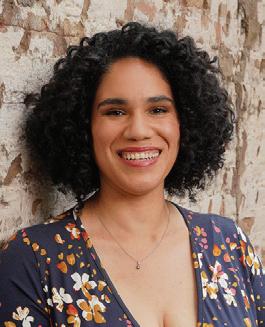
“Music is my connection to the world,” said Jessie Montgomery, our Mead Composerin-Residence. “It guides me to understand my place in relation to others and challenges me to make clear the things I do not understand.” Jessie Montgomery is a native of the Lower East Side of New York City. The arts were part of her daily family life. She started violin lessons at the Third Street Music School Settlement and now holds degrees from the Juilliard School (in violin) and New
York University (a master’s in composition for film and multimedia) and is completing her doctorate from Princeton University. Since 1999 she has been closely involved with Sphinx, a Detroit-based nonprofit organization that supports young African American and Latino string players, and in recent years she has made time to continue appearing with Yo-Yo Ma’s Silk Road Ensemble.
In 2020 Montgomery was one of three Black composers named to the Metropolitan Opera/Lincoln Center Theater New Works commissioning program. The significance of her emergence in today’s cultural climate and the responsibilities it carries are not lost on Montgomery: “We have to take into account that we’re carrying a history inside of our beings and in the work that we do,” she said recently. As our Mead Composer-in-Residence, Montgomery was commissioned to write three works for the Orchestra. Riccardo Muti led the premiere of the first, Hymn for Everyone, in April 2022, and unveiled the second, Transfigure to Grace, last May. Her percussion concerto, featuring Cynthia Yeh, will be premiered on May 30, conducted by Manfred Honeck.
Montgomery has devoted her career to working with young artists and
CSO.ORG 3
above: Jessie Montgomery, photo by Todd Rosenberg
musicians with diverse backgrounds and ideas, and she is known for immersing herself in the activities of the new-music community. Montgomery, who recently relocated to Chicago, is keenly aware that she is working in the hometown of Florence Price, whom she calls “the godmother of Black music.”
Coincident Dances, a score from 2017, makes an ideal introduction to her work as a reflection of our many-faceted musical existence and as a kind of self-portrait: a New York day in the life of a young artist. But it also suggests that Montgomery possesses the rare gift of writing music that not only reflects the complexity of our world but one that will lead us forward. By already forging her own distinct voice in a crowded musical scene—a voice that melds and marries many different influences—she is well-positioned to help guide the music of our multicultural future. “I’ve always been interested in trying to find the intersection between different types of music,” she has said. “I imagine that music is a meeting place at which all people can converse about their unique differences and common stories.”
—Phillip Huscher
Jessie Montgomery on Coincident Dances
Coincident Dances is inspired by the sounds found in New York’s various cultures, capturing the frenetic energy and multicultural aural palette one hears even in a short walk through a New York City neighborhood. The work is a fusion of several different soundworlds: English consort, samba, mbira dance music from Ghana, swing, and techno. My reason for choosing these styles sometimes stemmed from an actual experience of accidentally hearing a pair simultaneously, which happens most days of the week walking down the streets of New York, or one time when I heard a parked car playing Latin jazz while I had rhythm and blues in my headphones. Some of the pairings are merely experiments. Working in this mode, the orchestra takes on the role of a DJ of a multicultural dance track.
—Jessie Montgomery
4 COMMENTS
opposite page: Margaret Brouwer, photo by Ken Blaze
COMMENTS
MARGARET BROUWER
Born 1940; Ann Arbor, Michigan
Remembrances
COMPOSED 1996
FIRST PERFORMANCE
March 18, 1996; Roanoke Symphony, Roanoke, Virginia
INSTRUMENTATION
two flutes with piccolo, two oboes with english horn, two clarinets, two bassoons and contrabassoon, four horns, three trumpets, three trombones, tuba, timpani, percussion, harp, strings
APPROXIMATE PERFORMANCE TIME
14 minutes
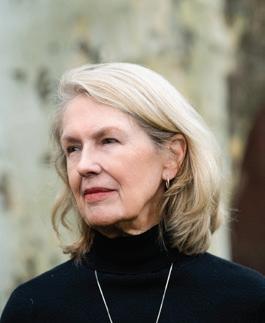
Margaret Brouwer’s music has earned critical accolades for its lyricism, imagery, and emotional power.
Brouwer’s honors include an award from the American Academy of Arts and Letters, Meet the Composer Commissioning/USA Award, Guggenheim Fellowship, Ohio Council for the Arts Individual Fellowship, and grants from the National Endowment for the Arts, Ford Foundation, and John S. Knight Foundation.
The Music Division of the New York Public Library for the Performing Arts at Lincoln Center has established a Margaret Brouwer collection available for research by scholars, composers, and performers. Brouwer’s music
has been performed by the symphony orchestras of Detroit, Dallas, Seattle, Liverpool, Rochester, Anchorage, the Royal Scottish National Orchestra, Birmingham (England), Cabrillo, Canton, Columbus, American Composers Orchestra, St. Paul Chamber Orchestra, and at venues, including Carnegie Hall, Merkin Hall, Symphony Space, the Chamber Music Society of Lincoln Center, Tanglewood Festival of Contemporary Music, Kennedy Center, Corcoran Gallery, Philips Gallery, as well as venues throughout Taiwan and Germany. Brouwer served as head of the composition department and holder of the Vincent K. and Edith H. Smith Chair in Composition at the Cleveland Institute of Music from 1996 to 2008. Residencies include the MacDowell Colony, where she has been a Norton Stevens Fellow, and the Rockefeller Foundation’s Bellagio Center.
Recordings of Brouwer’s music can be found on the Naxos, New World, CRI, Crystal, Centaur, and Opus One labels.
Margaret Brouwer on Remembrances
This tone poem is an elegy and a tribute to Robert Stewart, who was a musician, composer, sailor, and loved one. Beginning with an expression of grief and sorrow, the
CSO.ORG 5
music evolves into a musical portrait full of warm memories, love and admiration, and images of sailing. Typical of elegies and tone poems, such as Death and
FLORENCE PRICE
Born April 9, 1887; Little Rock, Arkansas Died June 3, 1953; Chicago, Illinois
Symphony No. 1
COMPOSED 1931–32
FIRST PERFORMANCE
July 15, 1933, Auditorium Theater, Chicago, by the Chicago Symphony Orchestra; Frederick Stock conducting
INSTRUMENTATION
two flutes and two piccolos, two oboes, two clarinets, two bassoons, four horns, two trumpets, three trombones, tuba, timpani, percussion, strings
APPROXIMATE PERFORMANCE TIME
40 minutes
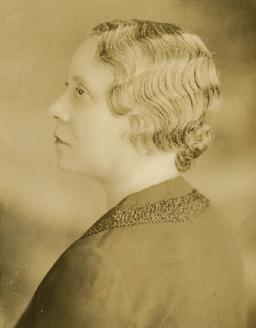
In 2009, a couple bought an old house outside of Chicago. In the attic, they found boxes filled with yellowed sheets of music. Every piece was written by the same woman—Florence Price. “Who is Florence Price?” they wondered.*
This question, posed in these opening lines of a recent children’s book, is one the entire music world has been asking in recent years. The old, dilapidated
Transfiguration by Strauss, it ends in a spirit of consolation and hope.
Courtesy of margaret-brouwer.squarespace.com
house sits in St. Anne, a tiny community little more than an hour south of Chicago, in Kankakee County. This had been Florence Price’s summerhouse, long ago abandoned. The couple, the Gatwoods, were planning to renovate. Their discovery jump-started the renaissance of one of this country’s important musical figures, a Black woman composer with strong ties to Chicago and the Chicago Symphony Orchestra, whose music has long been overlooked, neglected, and dismissed.
Florence Price moved to Chicago with her family in 1927, making the Great Migration, followed by thousands of Black Americans fleeing the terrors of living in the South and hoping to find a land of opportunity in Chicago. When she grew up in Little Rock, Arkansas, her father, Dr. James H. Smith, a prosperous dentist, was one of Little Rock’s most highly respected Black men. (The governor was rumored to be his secret patient.) But Florence already saw herself as part of a larger musical world. In 1903 she began studies at the New England Conservatory of Music
6
COMMENTS
in Boston, completing the four-year program in three years and graduating with diplomas in both piano and organ, the only student to receive two degrees that year.
After graduation, Florence set aside her musical ambitions; she returned to Little Rock to teach and lived at home with her parents. After her father died in 1910, Florence’s mother, who was of mixed race, sold all the family possessions, chose to pass for white, moved back to her hometown of Indianapolis, and vanished into the society of the majority. Florence moved from one teaching job to another, continued to give organ and piano recitals, married Thomas Jewell Price (the attorney who had helped settle Dr. Smith’s estate), started a family, and settled into a comfortable middle-class life in a predominantly Black neighborhood in Little Rock. Aside from the song she wrote after the birth of her first child, “To My Little Son,” she rarely found the time to compose anything.
But she did not give up. She spent the summers of 1926 and 1927 in Chicago, where she studied composition at Chicago Musical College, and no doubt realized that this was the place to build her career and live a better life, remote from the rising racial tension in Little Rock and the attacks and crimes and lynchings that had begun to spread throughout the city, sweeping into her family’s own neighborhood. Her arrival
in Chicago placed her on the cusp of the Black Chicago Renaissance.
Even in Chicago, composing music did not come easily. After the Depression, her husband was often without work; he grew angry and abusive. He moved out of the family house in March 1930. The next January, Price was granted a divorce and custody of their two daughters. By then, she had begun to write music on a larger scale, reflecting a new certainty that composing was her calling.
In January 1931, Price began the score that would change her life—a symphony in E minor, her first big orchestral piece. She worked on the score for much of the year (a broken foot gave her a bonus of uninterrupted time to compose). Sometimes, to make ends meet, she accompanied silent films on the organ in movie houses along “The Stroll,” a stretch of South State Street between Twenty-sixth and Thirty-ninth streets, the heart of Chicago’s Black community. As she struggled to put her life back together and become the composer she wanted to be in a world that viewed her through a prism of fierce prejudices, she could not have dreamed that the most unlikely thing would happen: that Frederick Stock and the Chicago Symphony would give the world premiere of her symphony at the 1933 World’s Fair—the Century of Progress International Exposition.
In February 1932, Price entered four of her new works in the Rodman opposite page: Florence Price, portrait by R.D. Tones, 1933. Florence Beatrice Smith Price Papers Addendum, MC 988a, Box 2, Folder 1, Item 3. Special Collections, University of Arkansas Libraries, Fayetteville
CSO.ORG 7 COMMENTS
Wanamaker Competition, named for the department store owner and established five years earlier to support African American composers. Price’s symphony took the $500 first prize in the orchestral category (her tone poem, Ethiopia’s Shadow in America, received honorable mention). That same year, Stock was named music advisor for the exposition, set in Chicago to honor the city’s centennial, and he began to look around for new scores that would represent the state of music in America.
“Chicago talent first and American talent second,” he said. “European representation will be drastically limited.” Although Stock did not know Price, he picked her unpublished first symphony as the centerpiece of a concert to be given on June 15, 1933, in the Auditorium Theatre. (We have since learned that Maude Roberts George, president of the Chicago Music Association and a critic for the Chicago Defender, raised the funds to underwrite the cost of

the concert.) Despite the excitement and the applause that night, no one at the time entirely recognized the history-book significance of the occasion: this was the first performance of a large-scale composition by
this page: Frederick Stock and
| opposite page:
Chicago
8 COMMENTS
the
Symphony Orchestra gave the world premiere of Florence Price’s First Symphony on June 15, 1933, in conjunction with the Century of Progress International Exposition.
Florence Price, seated, fourth from left, at a 1934 party in honor of Maude Roberts George, seated, third from right, president of the Chicago Music Association and a critic for the Chicago Defender, who raised funds to underwrite the cost of the concert featuring Price’s First Symphony in 1933. Photography by Worthington Studios. Florence Beatrice Smith Price Papers Addendum, MC 988a, Box 2, Folder 1, Item 2. Special Collections, University of Arkansas Libraries, Fayetteville
a Black woman composer given by one of the major U.S. orchestras.
“It is a faultless work, a work that speaks its own message with restraint and yet with passion,” the critic for the Chicago Daily News wrote, “. . . worthy of a place in the regular symphonic repertory.” More telling was the reception in the Black press. “No one could have sat through that program . . . and not felt, with a sense of deep satisfaction, that the Race is making progress in music,” wrote Robert Abbot, editor of the Chicago Defender, arguably the most important and most widely read Black publication in America at the time. “First there was a feeling of awe as the Chicago Symphony Orchestra, an aggregation of master musicians of the white race, and directed by Dr. Frederick Stock, internationally known conductor, swung into the beautiful, harmonious strains of a composition by a Race woman.” In the same paper, Nahum Daniel Brasher wrote, “It is the beginning of a new era for us in the world of music.”

blinding whiteness of the mainstream classical music world.
ADressed in a long, white gown, Price was called to the stage again and again after the performance to share the enthusiastic response with Stock and the Orchestra members. It was a startlingly unfamiliar sight: a lone Black woman in an all-white, all-male community, the image perfectly symbolizing the singularity of Black success in the
s in the old European model— including Dvořák’s long-famous New World Symphony of 1893—Price’s Symphony no. 1 has four movements in the familiar sequence: a broad and vigorous opening Allegro in sonata form, a slow movement, a dance-like “scherzo,” and a big, rousing finale. But the material they are made from—the colors of their harmonies, the cut of their melodies, the sonorities of the instrumental combinations— often come from a different world. Price begins her first symphony with a syncopated bassoon solo that immediately recalls Dvořák’s New World, but as the first movement continues—in textbook sonata form—Price’s own distinct voice emerges from the fabric of late-nineteenth-century symphonic tradition. For her second movement, a stately Largo, Price writes a new hymn
CSO.ORG 9 COMMENTS
for brass choir that grows into a movement nearly as spacious and substantial as the first.
For the third movement—where Mozart wrote minuets and Beethoven composed scherzos—Price writes “Juba,” based on the syncopations of “pattin’ juba”—the sort of slave fiddler and banjo player music Solomon Northup describes in his 1853 autobiography, Twelve Years a Slave:
The patting is performed by striking the hands on the knees, then striking the hands together, then striking the right shoulder with one hand, the left with the other—all the while keeping time with the feet and singing.
The finale is an energetic rondo that makes abundant use of the pentatonic scale, familiar throughout jazz and blues, a new-world interpretation of an old-world form.
An important postscript. Six months after the premiere, Price ran into Stock on Michigan Avenue. They stopped to talk. He agreed to let her sit in on some Chicago Symphony rehearsals—two days later, she heard Artur Schnabel and Stock prepare Beethoven’s Fourth Piano Concerto—and he encouraged her to continue work on her new piano concerto. But he did not program it—or any of Price’s other works. Her subsequent appeals to Serge Koussevitzky, music director of the Boston Symphony and a well-known champion of new music, are now classics in the long history of composers cast aside because of their color
or gender. She wrote him seven times, beginning in 1935, making the case for her symphonies. “To begin with,” she wrote in a long letter on July 5, 1943, “I have two handicaps—those of sex and race. I am a woman, and I have some Negro blood in my veins. I should like to be judged on merit alone.” In another: “Unfortunately, the work of a woman composer is preconceived by many to be light, froth, lacking in depth, logic, and virility,” she said. “Add to that the incident of race—I have Colored blood in my veins—and you will understand some of the difficulties that confront one in such a position.”
She received two responses from Koussevitzky’s secretary. In 1944 Koussevitzky finally looked at one of Price’s scores, but he never conducted any of her music. Early in 1951, Price received a telegram from Sir John Barbirolli, who had heard about her during his time as music director of the New York Philharmonic, asking her to write a concert overture or a suite based on Black American spirituals that he could play with his current orchestra, the Hallé Orchestra in Manchester, England. Price did write an overture— the score is now lost—and Barbirolli premiered it in the spring of 1951, but Price was in the hospital at the time for an extended stay and could not travel to hear it. She died of a stroke in Chicago two years later.
In 1964 an elementary school on South Drexel Boulevard, in North Kenwood, near Price’s old neighborhood, was named for her. But in 2011, Chicago Public School officials closed
10 COMMENTS
Florence B. Price Elementary after four years of chronic poor performance on state standardized tests. The manuscripts discovered in St. Anne contained many lost works, including two violin concertos and a fourth symphony—music that came painfully close to vanishing forever. The Chicago Symphony did not play another note of Price’s music until May 2013, when it programmed her Suite. Riccardo Muti originally planned to give the first Chicago performances of Price’s Third Symphony in Orchestra Hall in the spring of 2020, but those concerts were among the first to be canceled during the pandemic. Muti was able to perform the symphony in May 2022—eighty-nine years after the Orchestra unveiled her first sym phony (her second is lost, aside from
a single page). He and the Orchestra then took the third symphony on tour in January, where it was given its first European performances in Luxembourg and in Vienna’s legendary Musikverein concert hall.
As Who Is Florence Price? says at the end, “Today Florence’s music can be heard all around the world, just like she dreamed of when she was young.”

Phillip Huscher is the program annotator for the Chicago Symphony Orchestra.

Who Is Florence Price?, and illustrated by students of the Special Music School at Kaufman Music Center in New York City, with an introduction by Jessie Montgomery, the Chicago Symphony Orchestra’s Mead Composer-in-Residence, was published last year by Schirmer Trade Books.
A gift to the Civic Orchestra of Chicago supports the rigorous training that members receive throughout the season, which includes coaching from musicians of the Chicago Symphony Orchestra and world-class conductors.
Your gift today ensures that the Chicago Symphony Orchestra Association will continue to enrich, inspire and transform lives through music.
A gift to the Civic Orchestra of Chicago supports the rigorous training that members receive throughout the season, which includes coaching from musicians of the Chicago Symphony Orchestra and world-class conductors.
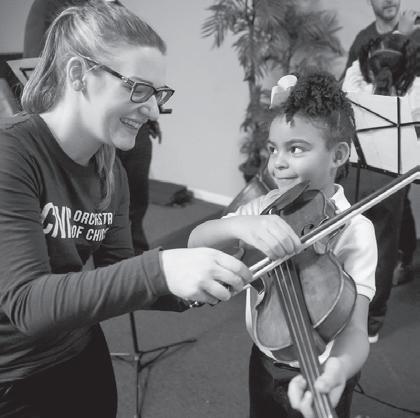
Your gift today ensures that the Chicago Symphony Orchestra Association will continue to enrich, inspire and transform lives through music. CSO.ORG/GIVETOCIVIC
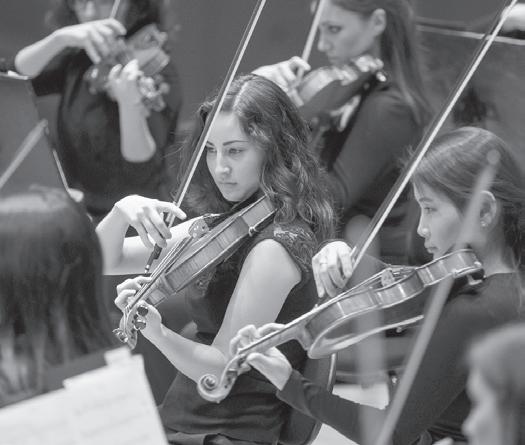
CSO.ORG 11
COMMENTS
312-294-3100
CSO.ORG/GIVETOCIVIC 312 -294 - 3100 SCAN TO GIVE
This performance is generously sponsored by the JCS Arts, Health and Education Fund of DuPage Foundation.










12
PROFILES
Andrew Grams Conductor

With a unique combination of intensity, enthusiasm, and technical clarity, American conductor Andrew Grams has steadily built a reputation for his dynamic concerts, ability to connect with audiences, and long-term orchestra building. He is the winner of 2015 Conductor of the Year from the Illinois Council of Orchestras and has led orchestras throughout the United States, including the National Symphony Orchestra, Philadelphia Orchestra, and the Chicago, Detroit, St. Louis, Cincinnati, Baltimore, Dallas, and Houston symphony orchestras.
Andrew Grams became music director of the Elgin Symphony Orchestra after an international search in 2013, concluding his tenure there after eight seasons. A frequent traveler, Grams has worked extensively with orchestras abroad, including the symphony orchestras of Toronto, Montreal, and Vancouver, Orchestre National de France, Hong Kong Philharmonic, BBC Symphony Orchestra London, the symphony orchestras of Sydney, Melbourne, Adelaide, New Zealand, and Barcelona, and Het Residentie Orchestra in The Hague, Netherlands. He has led multiple performances of George Balanchine’s The Nutcracker with the New York City Ballet and the first
performances of the new production of The Nutcracker for the Norwegian National Ballet in Olso.
As an educator, Grams has worked with orchestras at institutions such as the Curtis Institute of Music, Cleveland Institute of Music, Indiana University, Roosevelt University, the National Orchestral Institute at the University of Maryland, and the Amsterdam Conservatory.
Born in Severn, Maryland, Andrew Grams began studying the violin at eight. In 1999 he received a bachelor’s degree in violin performance from the Juilliard School, and in 2003, he received a conducting degree from the Curtis Institute of Music, where he studied with Otto-Werner Mueller. He was selected to spend the summer of 2003 studying with David Zinman, Murry Sidlin, and Michael Stern at the American Academy of Conducting at Aspen and returned to that program again in 2004. Grams served as assistant conductor of the Cleveland Orchestra from 2004 to 2007, where he worked under the guidance of Franz Welser-Möst and has since returned for several engagements.
An accomplished violinist, Grams was a member of the New York City Ballet Orchestra from 1998 to 2004, serving as acting associate principal second violin in 2002 and 2004. He has performed with ensembles, including the Orpheus Chamber Orchestra, Orchestra of St. Luke’s, Brooklyn Philharmonic, and the New Jersey Symphony.
PHOTO BY MASATAKA SUEMITSU
CSO.ORG 13
Civic Orchestra of Chicago
Founded in 1919 by Frederick Stock, second music director of the Chicago Symphony Orchestra (CSO), the Civic Orchestra of Chicago prepares emerging professional musicians for lives in music. Civic members participate in rigorous orchestral training, September through June each season, with the Robert Kohl and Clark Pellett Principal Conductor Ken-David Masur, musicians of the CSO, and some of today’s most luminary conductors, including Riccardo Muti, the CSO’s music director emeritus for life.
The importance of the Civic Orchestra’s role in Greater Chicago is underscored by its commitment to present concerts of the highest quality at no charge to the public. In addition to the critically acclaimed live concerts at Symphony Center, Civic Orchestra performances can be heard locally on WFMT (98.7 FM).
Civic musicians also expand their creative, professional, and artistic boundaries and reach diverse audiences through educational performances at Chicago Public Schools and a series of chamber concerts at various locations throughout the city, including Chicago Park District fieldhouses and the National Museum of Mexican Art.
To further expand its musician training, the Civic Orchestra launched the Civic Fellowship program in the
2013–14 season. Each year, ten to fifteen Civic members are designated as Civic Fellows and participate in intensive leadership training that is designed to build and diversify their creative and professional skills.
From 2010 to 2019, Yo-Yo Ma was a leading mentor to Civic musicians and staff in his role as CSO Judson and Joyce Green Creative Consultant, and the programs and initiatives he established are integral to the Civic Orchestra curriculum today. Civic Orchestra musicians develop as exceptional orchestral players and engaged artists, cultivating their ability to succeed in the rapidly evolving world of music in the twentyfirst century.
The Civic Orchestra’s long history of presenting full orchestra performances free to the public includes annual concerts at the South Shore Cultural Center (in partnership with the South Shore Advisory Council) as well as numerous Chicago Public Schools. The Civic Orchestra is a signature program of the Negaunee Music Institute at the Chicago Symphony Orchestra, which offers a wide range of education and community programs that engage more than 200,000 people of diverse ages, incomes, and backgrounds each year in Chicago and around the world.
For more on the Civic Orchestra of Chicago and its Principal Conductor Ken-David Masur, please visit cso.org/ civic.
14 PROFILES
Civic Orchestra of Chicago
Ken-David Masur Principal Conductor
The Robert Kohl and Clark Pellett Principal Conductor Chair
VIOLINS
Subin Shin
Marian Antonette Mayuga*
Ran (Ryan) Huo
Heewoo Seo
Matthew Weinberg
J. Andrés Robuschi
Jonah Kartman
Kristian Brusubardis
Kimberly Bill
Polina Borisova
Annie Pham
Darren Carter
Matthew Musachio*
Lina Yamin*
Alec Tonno
Ebedit Fonseca
Janani Sivakumar
Julianne Oh
Mona Munire Mierxiati
Elise Maas
Hobart Shi
Nelson Mendoza
Sean Hsi
Isabelle Chin
Valentina Guillen Menesello
Hojung Christina Lee
Freya Liu
Danira Rodríguez-Purcell
Carlos Chacon
Justine Teo
VIOLAS
Amanda Kellman
Junghyun Ahn
Justin Pou
Derrick Ware
Siyang Calvin Dai
Sava Velkoff
Megan Yeung
Sanford Whatley
Cordelia Brand
Carlos Lozano
Phoebe Hu
Kelly Bartek
* Civic Orchestra Fellow
CELLOS
David Caplan
Brandon Xu
Lindsey Sharpe
Buianto Lkhasaranov
Cameron Slaugh
Francisco Lopez Malespin*
Miles Link
J Holzen*
Lidanys Graterol
Chad Polk
BASSES
James O’Toole
Daniel W. Meyer
Ben Foerster*
Broner McCoy
Hannah Novak
Walker Dean
Leo Finan
Nicholas Boettcher
FLUTES
Jungah Yoon
Aalia Hanif*
PICCOLOS
Aalia Hanif*
Katarina Ignatovich
OBOES
James Kim
Natalie Johnson
CLARINETS
Amy Hur*
Elizabeth Kapitaniuk
BASS CLARINET
Elizabeth Kapitaniuk
BASSOONS
Nina Laube*
Ian Arthur Schneiderman
CONTRABASSOON
Ian Arthur Schneiderman
HORNS
Asunción Martínez
Emily Whittaker
Loren Ho
Alessandra Liebmann
Ryan Williamson
TRUMPETS
Sean-David Whitworth
Kai-Chun Chang
Abner Wong
TROMBONES
Hugo Saavedra*
Alex Ertl
BASS TROMBONE
Refael Noriega
TUBA
Ben Poirot
TIMPANI
Tomas Leivestad
PERCUSSION
Sehee Park
Charley Gillette
Alex Chao
HARP
Janna Young
LIBRARIAN
Benjimen Neal
CSO.ORG 15 PROFILES
CIVIC ORCHESTRA OF CHICAGO SCHOLARSHIPS
Members of the Civic Orchestra receive an annual stipend to help offset some of their living expenses during their training in Civic. The following donors have generously underwritten a Civic musician(s) for the 2023–24 season.
Eleven Civic members participate in the Civic Fellowship program, a rigorous artistic and professional development curriculum that supplements their membership in the full orchestra. Major funding for this program is generously provided by Lori Julian for the Julian Family Foundation
Nancy A. Abshire
Amanda Kellman, viola
Dr. & Mrs. Bernard H. Adelson Fund
Megan Yeung, viola
Sue and Jim Colletti
Nina Laube,* bassoon
Lawrence Corry
Jonah Kartman, violin
Robert and Joanne Crown Income Charitable Fund
Charley Gillette, percussion
James Kim, oboe
Buianto Lkhasaranov, cello
Daniel W. Meyer, bass
Subin Shin, violin Abner Wong, trumpet
Mr. † & Mrs. David A. Donovan
Jacob Medina, horn
Mr. & Mrs. Paul C. Gignilliat
Janani Sivakumar, violin
Mr. & Mrs. Joseph B. Glossberg
Hannah Novak, bass
Richard and Alice Godfrey
Matthew Weinberg, violin
Jennifer Amler Goldstein
Fund, in memory of Thomas M. Goldstein
Alex Chao, percussion
Chet Gougis and Shelley Ochab
Tomas Leivestad, timpani
Mary Winton Green
Victor Stahoviak, bass
Jane Redmond Haliday Chair
Mona Munire Mierxiati, violin
Lori Julian for the Julian Family Foundation
Nelson Mendoza, violin
Lina Yamin, violin
Lester B. Knight Charitable Trust
Valentina Guillen Menesello, violin
Elizabeth Kapitaniuk, clarinet
Elise Maas, violin
Ryan Williamson, horn
Brandon Xu, cello
League of the Chicago Symphony Orchestra Association
Lindsey Sharpe, cello
Leslie Fund Inc.
Francisco Lopez Malespin,* cello
Phil Lumpkin
Matthew Musachio,* violin
Glenn Madeja and Janet Steidl Abigail Monroe, cello
The Maval Foundation
Mark Morris, horn Felix Regalado, trombone
Judy and Scott McCue and the Leslie Fund Inc.
Aalia Hanif,* flute
† Deceased * Civic Orchestra Fellow + Partial Sponsor
Gifts listed as of February 2024
Dr. Leo and Catherine
Miserendino
Sean-David Whitworth, trumpet
Ms. Susan Norvich
Nick Collins,* tuba
Ben Poirot, tuba
Margo and Mike Oberman
Ben Foerster,* bass
Sandra and Earl J. Rusnak, Jr. †
Quincy Erickson, trumpet
Barbara and Barre Seid Foundation
Alexander Mullins, bass trombone
Hugo Saavedra,* trombone
The George L. Shields Foundation, Inc.
Hsuan Chen, violin
Carlos Lozano, viola
Cameron Slaugh, cello
David W. and Lucille G. Stotter Chair
Ran (Ryan) Huo, violin
Ruth Miner Swislow Charitable Fund
Kimberly Bill, violin
Lois and James Vrhel
Endowment Fund
Broner McCoy, bass
Theodore and Elisabeth Wachs
Hae Sol (Amy) Hur,+ clarinet
Dr. Marylou Witz
Marian Antonette Mayuga, violin
Anonymous
Jesús Linárez, violin
Anonymous
Gabriela Lara, violin
Anonymous
Hojung Christina Lee, violin
Anonymous
J Holzen,* cello
For complete donor listings, please visit the Richard and Helen Thomas Donor Gallery at cso.org/donorgallery.






















